Nerve pain can turn everyday tasks into painful struggles. Sharp, burning sensations strike without warning, leaving you searching for relief. Many people explore natural remedies like turmeric, hoping to avoid harsh side effects from medications.
But does turmeric help with nerve pain? The answer isn’t simple. This article breaks down what current scientific studies say about turmeric’s effects on nerve pain.
We’ll explain how turmeric may reduce inflammation and pain signals, what dosage researchers recommend, and the safest ways to take it. You’ll also learn which forms work best, capsules, teas, or extracts, and when it’s time to talk to a doctor.
No hype. No false promises. Just research-backed facts from trusted sources, so you can make smart decisions about your health.
By the end, you’ll know whether turmeric is a safe, effective option for your nerve pain.
Understanding Nerve Pain and Its Challenges
Nerve pain feels different from other pain types. It burns, shoots, and tingles in ways that traditional medications often can’t touch.
What Is Neuropathic Pain?

Nerve pain is unlike other types of pain. Regular pain happens when you hurt yourself, like cutting your finger or twisting your ankle. But nerve pain? That’s different. Neuropathic pain occurs when your nervous system itself gets damaged. Think of it like faulty electrical wiring in your house. The wires send the wrong signals.
This creates three main problems:
- Spontaneous pain that comes from nowhere
- Hyperalgesia – regular touch feels extremely painful
- Allodynia – even light touches hurt badly
Doctors refer to it as peripheral neuropathy when nerves outside the brain and spinal cord malfunction, causing them to function incorrectly. Your sensory system typically sends accurate pain signals to protect you. But with neuropathy, it sends false alarms constantly.
Why Conventional Treatments Fall Short

Here’s the frustrating truth: most pain medications are ineffective for nerve pain. Regular painkillers target inflammation. But nerve pain comes from damaged wiring, not inflammation.
Even potent opioids often fail to provide relief. The side effects make things worse: Drowsiness, nausea, addiction risks, and mental fog. You trade one problem for several others.
That’s why doctors continue to search for better treatment options.
The Science Behind Turmeric’s Pain-Fighting Power
Turmeric contains a secret weapon against inflammation. Scientists have identified exactly how this golden spice fights pain at the cellular level.
Turmeric’s Active Components
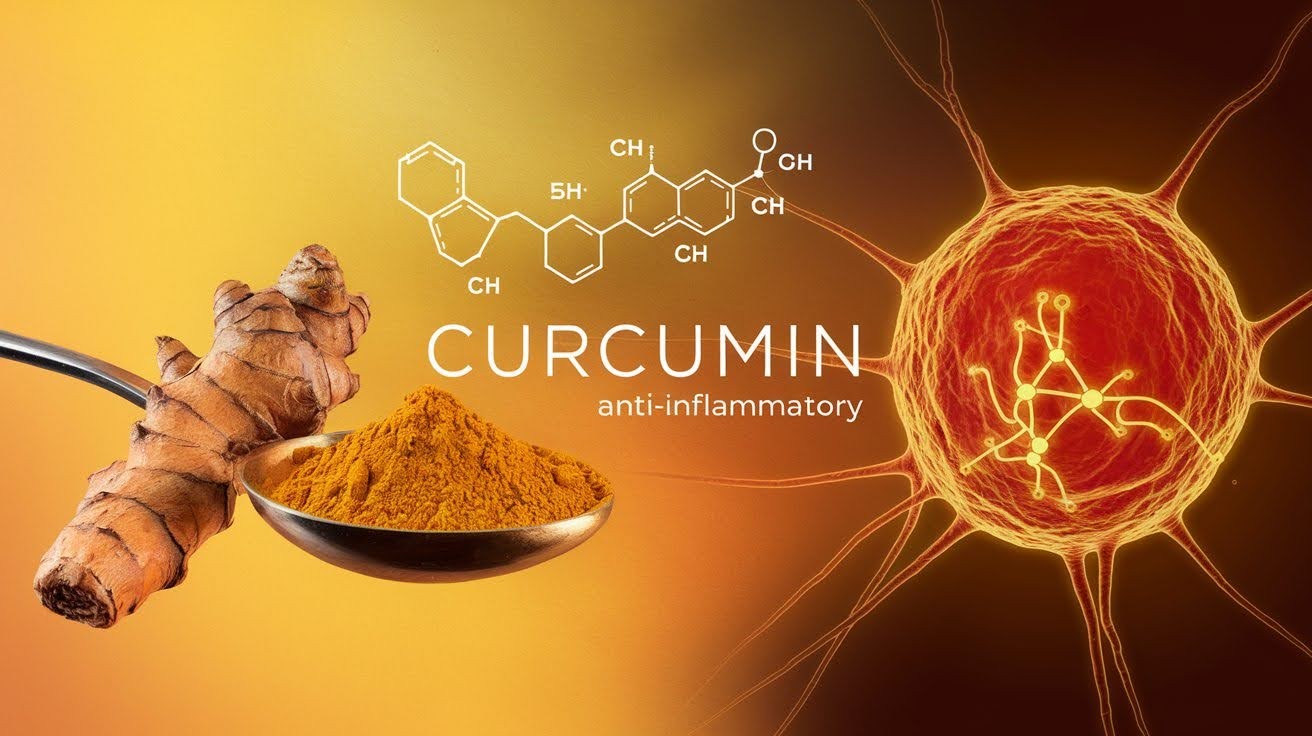
You probably know turmeric as that bright yellow spice in your kitchen. But there’s more to this root than meets the eye. Turmeric comes from Curcuma longa, a plant in the ginger family.
People have used it for thousands of years in cooking and medicine. Here’s what makes it special: curcumin. Curcumin is the primary active ingredient responsible for turmeric’s therapeutic properties.
This compound has two key abilities:
- Fights inflammation throughout your body
- Protects cells from damage as an antioxidant
Think of curcumin as your body’s cleanup crew.
How Turmeric Targets Nerve Pain
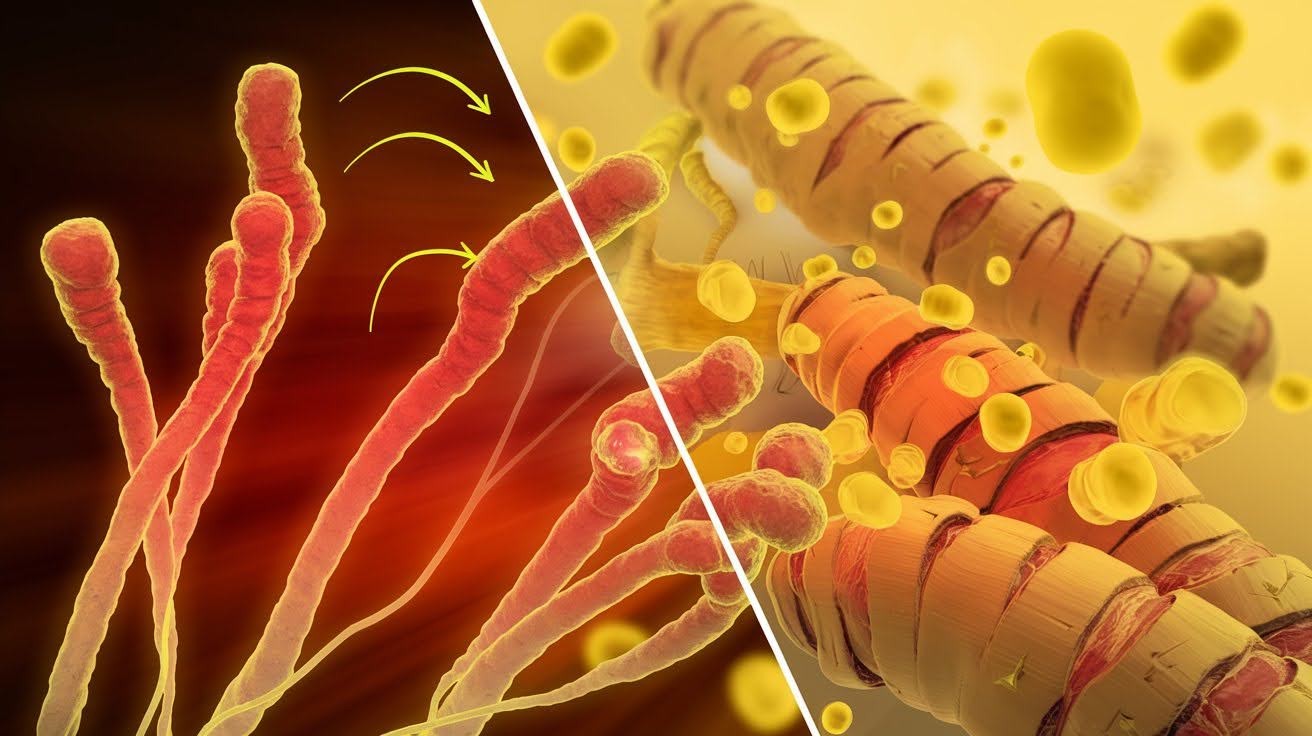
Nerve pain often starts with inflammation. When your nerves get inflamed, they send more pain signals to your brain. Curcumin directly reduces inflammation. It blocks specific pathways that create swelling around damaged nerves.
But that’s not all. Curcumin also protects nerve cells from further damage by combating harmful molecules known as free radicals. Some studies suggest it helps nerves heal themselves. Pretty impressive for a simple spice.
The research indicates that curcumin can also influence how the body produces pain-related proteins.
Clinical Evidence: What Research Studies Reveal
Rigorous clinical trials tell the real story. Multiple studies now show measurable results that go beyond wishful thinking and anecdotal reports.
Animal Model Studies

Scientists can’t test everything on humans first. That’s why they begin with animal studies to determine the effectiveness of treatments. Researchers used a procedure called spinal nerve ligation on lab animals. This creates nerve pain similar to what you might experience.
The results were promising. Animals given 40-60 mg/kg of curcumin showed significant pain reduction. That’s like giving a 150-pound person about 3-4 grams of curcumin extract daily. Here’s what improved within two weeks:
- Less sensitivity to light touches that usually hurt
- Reduced overreaction to heat and cold
- Better tolerance of physical pressure
The animals could perform everyday activities with less discomfort.
Human Clinical Trials and Reviews

Now for the human evidence. A 2021 systematic review looked at all available studies on curcumin for nerve pain. One major clinical trial tested 141 people with various types of nerve pain. They took curcumin-based formulas for several weeks.
The surprising finding? Curcumin worked about as well as diclofenac, a common prescription pain medication. But here’s the kicker – people tolerated curcumin much better. Fewer stomach problems. Less drowsiness. Better quality of life overall.
Specific Nerve Pain Conditions Studied

Diabetic neuropathy gets the most attention. This condition causes numbness, tingling, and burning in the hands and feet. Studies have shown that curcumin can significantly reduce these symptoms.
People reported less burning pain and better sensation in their fingers and toes. Post-surgery nerve pain also responds well to curcumin treatment. Some patients needed fewer prescription painkillers when taking curcumin supplements.
Research on spinal cord injury models suggests that curcumin may also help your brain process pain differently. Less amplification of pain signals means less suffering for you.
How Turmeric Works at the Cellular Level
Inside your cells, turmeric triggers powerful anti-inflammatory reactions. Here’s exactly what happens when this natural compound meets chronic pain.
Molecular Mechanisms for Pain Relief
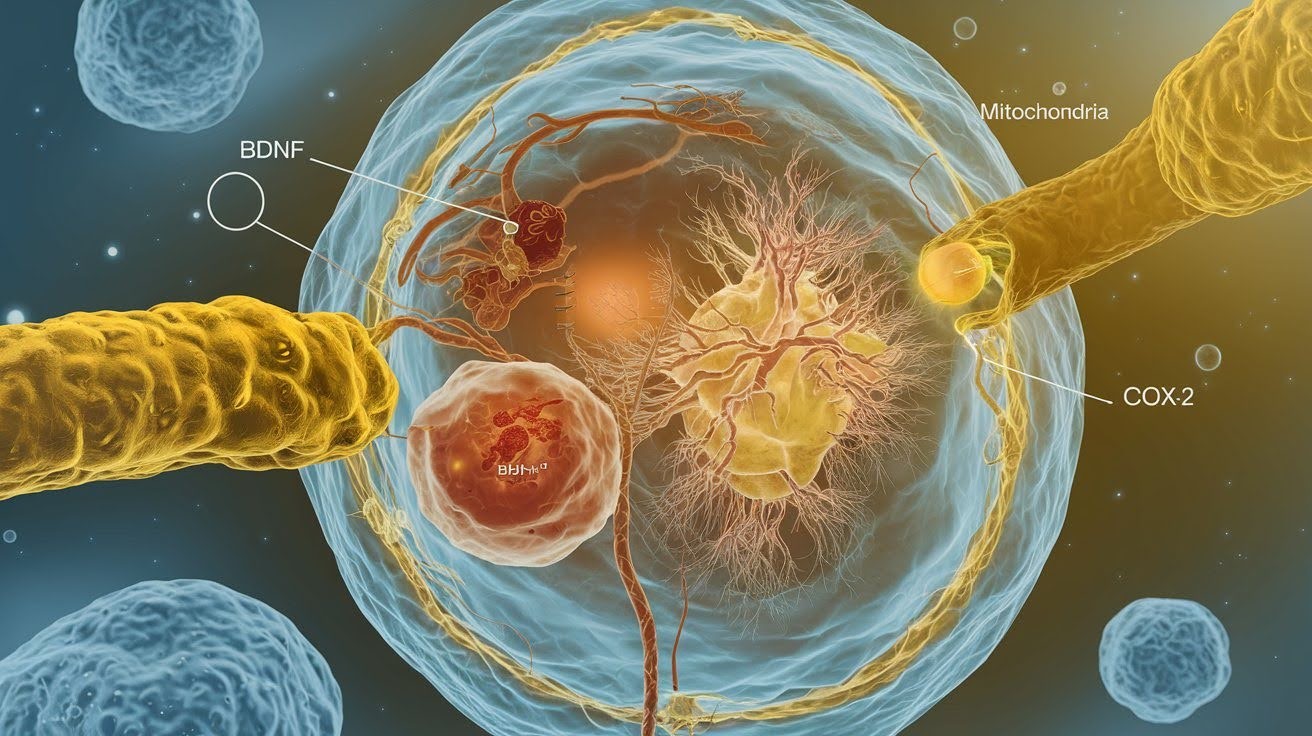
Let’s get into the details. Curcumin works like a master switch inside your cells.
It blocks something called p300/CBP histone acetyltransferase. Think of this as turning down the volume of your body’s pain. Curcumin also reduces two troublemakers:
- BDNF – a protein that makes nerves more sensitive
- Cox-2 – an enzyme that creates inflammation
Your brain has support cells called glial cells. When you have nerve pain, these cells get overactive and make things worse. Curcumin calms them down. It also helps your cells’ power plants (mitochondria) function more efficiently. Healthier cells mean less pain.
Targeting Neuroinflammation
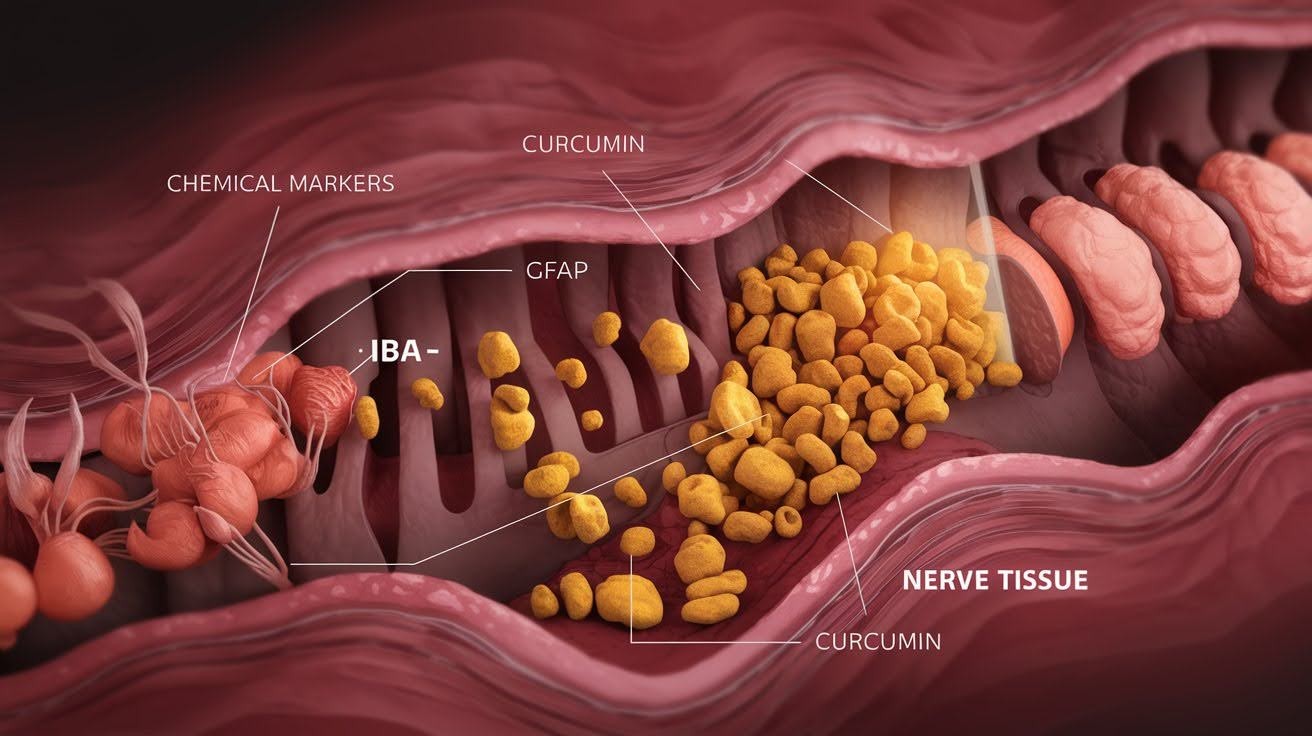
Here’s where it gets interesting. Your spinal cord has special immune cells called microglia and astrocytes. When nerves get damaged, these cells go into overdrive. They release chemicals that increase pain signals.
Curcumin inhibits this process by reducing specific markers, such as IBA-1, CD11b, and GFAP.
Less inflammation means less pain. It’s that simple. Curcumin also protects your nerve tissue from further damage.
How to Use Turmeric Effectively for Nerve Pain
Getting turmeric dosage wrong wastes your time and money. Follow these proven methods to maximize absorption and pain-fighting effectiveness.
Research-Based Dosing for Nerve Pain
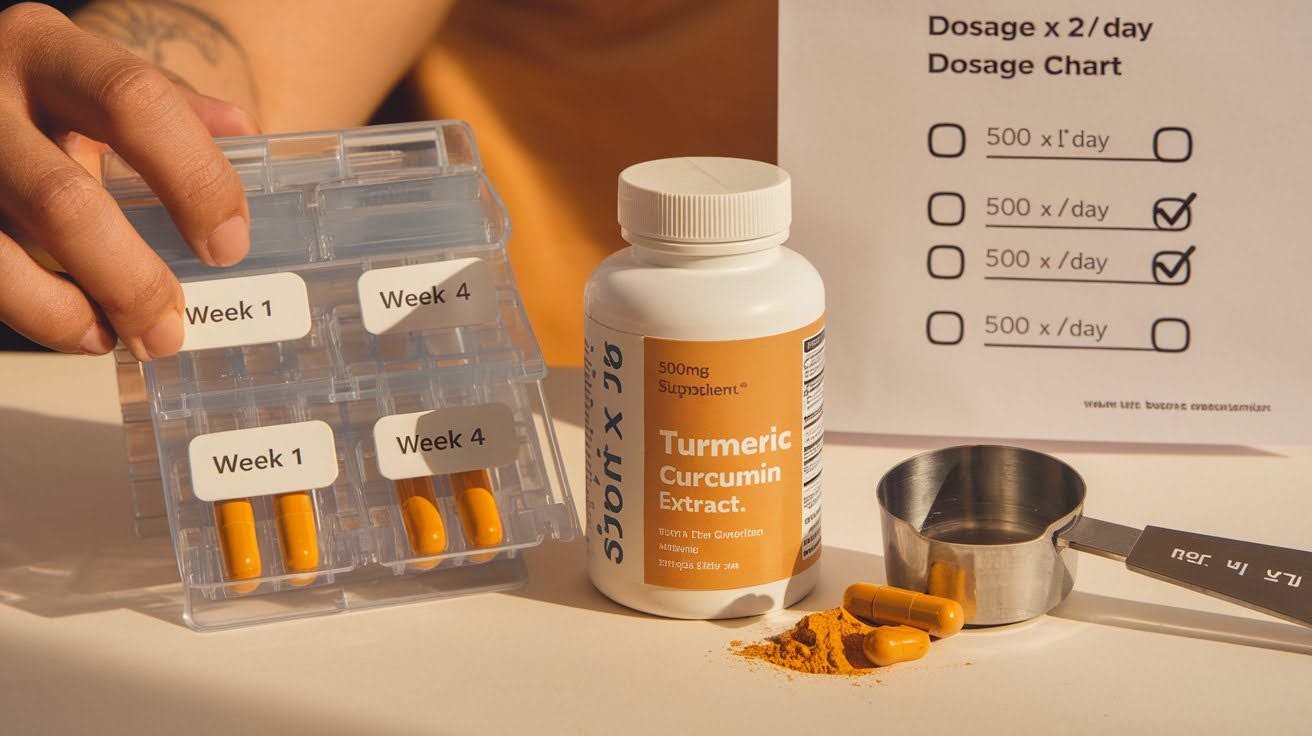
Getting the dose right matters. Most studies showing nerve pain relief used 500mg of curcumin extract twice daily. One pilot study tested 100mg per kilogram of body weight using curcumin C3 complex.
That’s about 7 grams for a 150-pound person – much higher than typical supplement doses. Don’t expect instant results. Most people need 2-4 weeks of consistent use before noticing improvements.
Here’s the key: chronic treatment is more effective than intermittent doses. Your body needs time to build up curcumin levels.
Maximizing Absorption for Best Results
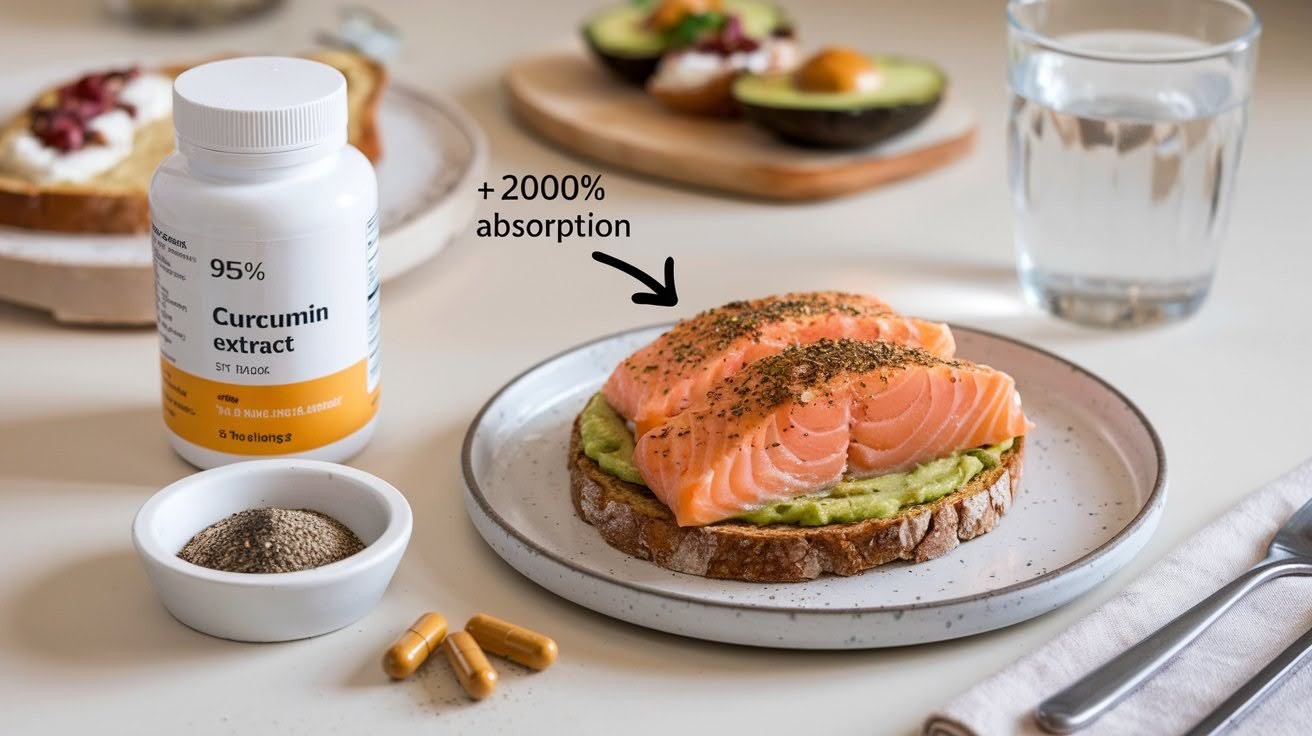
Plain turmeric powder won’t work well. Your digestive system struggles to absorb curcumin effectively. Two simple tricks boost absorption:
- Take with black pepper extract (piperine) – increases absorption by 2000%
- Consume with fatty meals – curcumin dissolves better in fat
Look for standardized extracts containing 95% curcumin. These concentrated forms are more effective than regular turmeric powder for nerve pain. Always take supplements with food to avoid stomach upset.
Safety Profile and Essential Precautions
Turmeric isn’t harmless for everyone. Know these important safety warnings before adding it to your nerve pain treatment plan.
General Safety and Side Effects
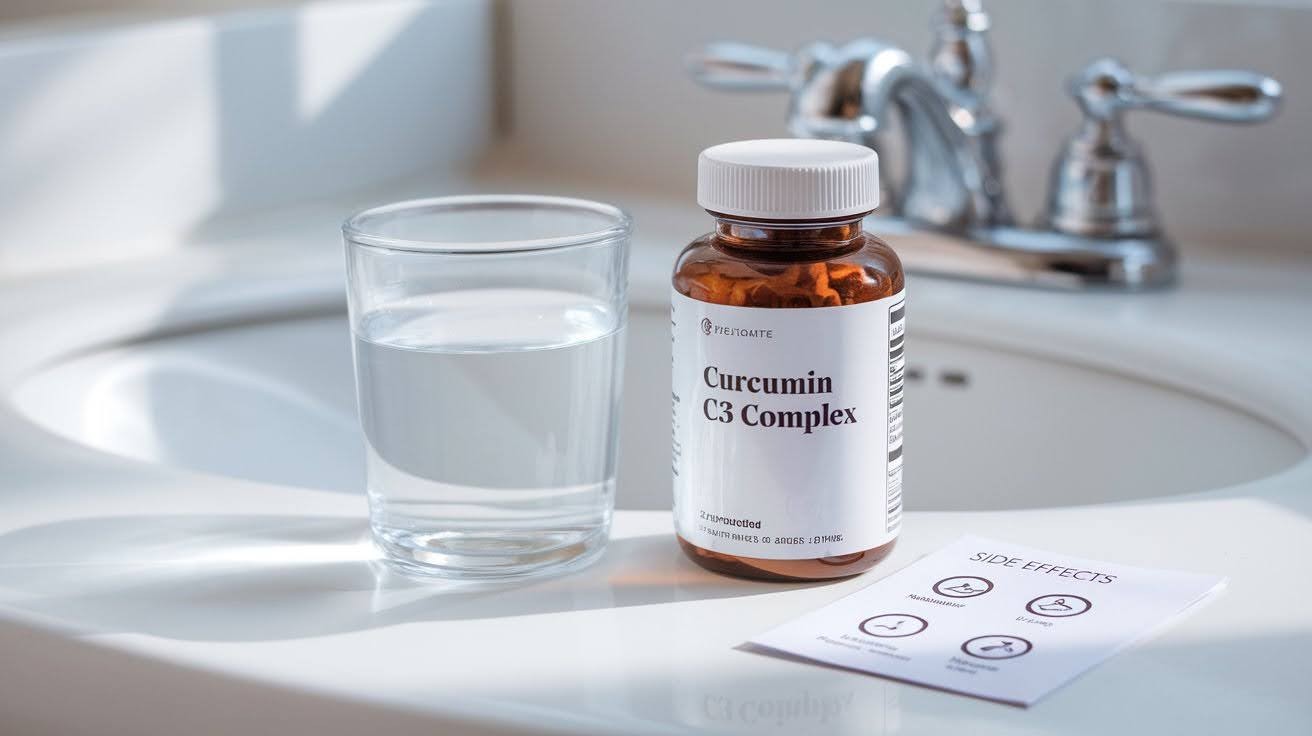
Good news first: The FDA considers curcumin C3 complex safe for most people. It has GRAS status, meaning it is generally recognized as Safe. Stay under 8 grams daily. That’s the recommended maximum for adults.
Most people tolerate curcumin well. But some experience mild issues:
- Stomach pain or upset
- Loose stools or diarrhea
- Nausea
- Skin rashes
Problems usually start at a daily intake of above 4,000mg. Stick to lower doses unless your doctor says otherwise.
Important Drug Interactions

Here’s where you need to be careful. Turmeric can thin your blood naturally. If you take blood thinners, such as warfarin or aspirin, consult your doctor first. The combination might increase bleeding risk.
Don’t guess about drug interactions. Always check with your healthcare provider before starting any turmeric supplements. Some people should avoid turmeric altogether – pregnant women and those with gallstones.
What Science Still Needs to Determine

Let’s be honest about what we don’t know yet. Most research on turmeric for nerve pain comes from animal studies, rather than human studies. We need larger clinical trials involving a greater number of participants. The current human studies are too small to give us complete confidence.
Scientists still don’t know:
- How long should you take turmeric for the best results
- Which dose works best for different people
- Why do some people respond better than others
Individual differences matter. What works for your neighbor might not work the same way for you. The research looks promising, but we’re still learning how to use turmeric most effectively for nerve pain.
Making an Informed Decision About Turmeric for Nerve Pain
You now have the facts to decide intelligently. Here’s how to determine if turmeric fits your specific nerve pain situation.
What the Current Science Supports

The evidence looks encouraging. Animal studies have shown promising results for the relief of nerve pain using turmeric. Human studies are more limited but still promising. People tolerate turmeric well, with few side effects reported.
Think of turmeric as a helpful addition to your current pain management plan, not a replacement for medical care.
Practical Next Steps

Start conservatively. Try 500mg twice daily with meals, along with black pepper extract.
Consult your doctor first, especially if you are taking other medications. Set realistic expectations:
- Give it 2-4 weeks to work
- Not everyone responds the same way
- Use alongside other treatments
Turmeric is most effective when used as part of a comprehensive approach to managing nerve pain, rather than as a standalone solution.
Conclusion
Science shows real promise. Research indicates turmeric can help reduce nerve pain through its anti-inflammatory and neuroprotective effects. Studies suggest 500mg twice daily might provide relief within 2-4 weeks.
You now have evidence-based information to make an informed decision about trying turmeric for nerve pain. While further human studies are needed, current research suggests that it may have potential benefits with minimal side effects.
Remember to consult your doctor before starting any supplement, especially if you take medications. Has this article helped clarify your questions about turmeric? Share your thoughts in the comments below – your experience might help others facing similar challenges.
And if you found this helpful, consider sharing it with someone who could benefit from natural pain management options. Your health decisions should always be informed ones.
Frequently Asked Questions
How much turmeric should I take for nerve pain?
Research suggests 500mg of curcumin extract twice daily with meals. Always consult your doctor before starting supplements, especially if you take other medications.
How long does turmeric take to work for nerve pain?
Most studies show improvements within 2-4 weeks of consistent daily use. Chronic treatment is more effective than intermittent doses for nerve pain relief.
Is turmeric safe for nerve pain treatment?
Yes, turmeric has an excellent safety profile. The FDA recognizes curcumin as safe. Side effects are mild and rare when taking 4,000mg or less daily.
Can turmeric replace my nerve pain medications?
No, turmeric should complement, not replace, medical treatment. Use it as part of a comprehensive pain management strategy under a doctor’s supervision.
What’s the best form of turmeric for nerve pain?
Standardized curcumin extracts with a 95% curcumin content are most effective. Take with black pepper extract and fatty meals for better absorption.










